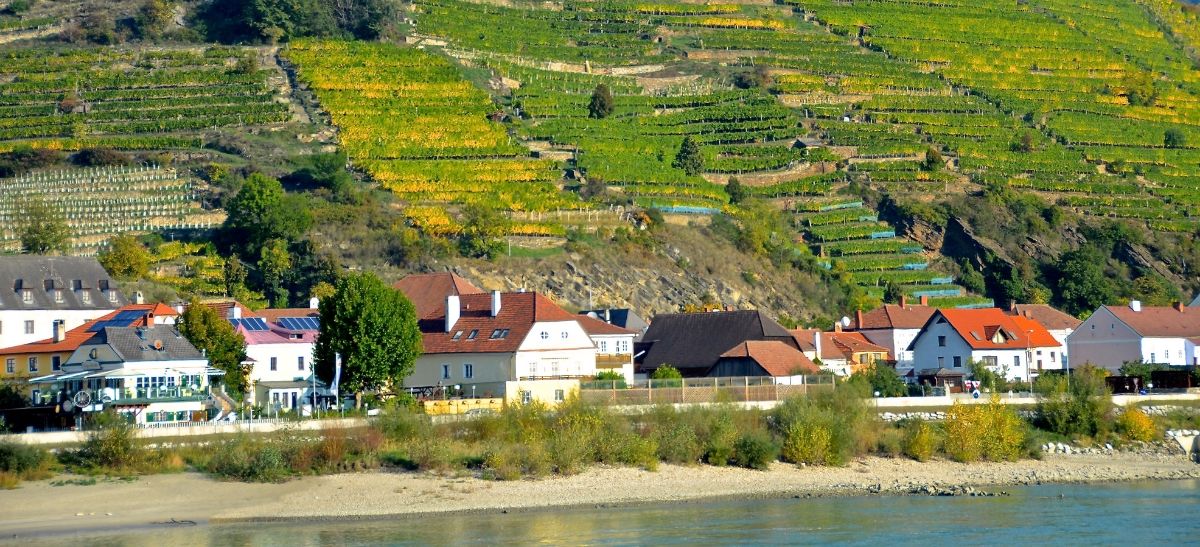Early Bird
Deadline
January 31, 2026
Judging
Date
May 18, 2026
Winners
Announced
June 10, 2026

It’s easy for restaurants to rely on the old classics: Bordeaux, Burgundy, Champagne, a bit of Italy and plenty of domestic wine, particularly from California. Most customers are unlikely to be disappointed. But it’s an approach that means you do miss out on some superb wine, from less hyped countries and regions that nonetheless produce wine every bit as good. At the top of that list would be Austria.
Few people know this better than former sommelier and wine merchant Klaus Wittauer, who has been importing Austrian wine into the United States for nearly 20 years. He brings in wine from all around Austria, made with grapes that go well beyond the most famous, Gruner Veltliner. He knows Austrian wine - and how it has evolved in the US market - inside out.
“No! We are still a very small, tiny entity. Overall the American customer doesn't realize wine is produced in Austria, it hasn't really changed in the 20 years at all. There's a few pockets where maybe Austrian wine has done a decent job, and that's in the sommelier world - that's where people realize that there's great wines produced in Austria. So, in New York, where you actually have restaurants with sommeliers and wine programs, Austrian wine has established itself quite well. But if you go to Washington DC, or in Northern Virginia, where I live, where you have mostly chain restaurants and buyers who buy for multiple restaurants, there's no place for Austrian wines on their lists.
“For a lot of Americans, Austria and Germany is the same, and in their minds that means that Austrian wine is going to be sweet. And if you go in and taste the wine, which is sweet in your mind, it doesn't matter how dry it is, you're going to find something sweet on it because Austrian wines are extracted and the top wines have just as much extraction as like a top Chardonnay or other top wines, but it's just in their opinion the bottle shape and because it's from Austria it has to be sweet. It's uphill. It's a battle!”
“That's what almost everybody associates Austrian wine with. And then people who are not much familiar with it or want to cover that region, they buy three or four of the same kind, same price point, and don't explore into the higher price points, so that's kind of ... Austria will never compete against Italy, or Spain, or Chile in the low price point. We just cannot produce it. So where Austria shines is at the higher, at our top tier, when you go into $25, $30, $40 price points, that's where we really shine and compete against the rest of the world, I think. But I think we still have a long way to go to get there, for the general consumer.”
“There's many styles of different flavors of Gruner Veltliner - but overall, it is flavorful, it has fruit without really being sweet, and it adapts to different spices without really overpowering it, but for the main reason I think it's because it's quite flavorful. It has components which mean you can go from vegetables, to savory, to actually sweeter-flavored dishes and spicy dishes. Gruner Veltliner can always kind of enhance the foods without really overpowering it. And in the lower price point, it's fresh, and crisp, and easy to drink, and in the higher price point it has structure, and it has a lot to give. You can almost chew it and eat it.”
“We make some of the best Rieslings in Austria because we get a little bit warmer weather than Germany, so our Rieslings have a little higher alcohol, like an Alsace, and are more complex. Riesling, in my opinion, is just the best food wine. We make outstanding Chardonnays and Pinot Gris, Pinot Blancs in the Burgundy varieties.
“It's very expensive to produce wine in [the Austrian region of] Styria, but they make some unbelievable Sauvignon Blancs. On a good vintage, they're outstanding, but there are ups and downs. And then I think on the red wines, we have Pinot Noir and Blaufrankisch. We have been planting Pinot Noir since the 12th century, so it's been a part of Austrian history for a long time, and it does quite well in our climate.”
“What Sauvignon Blanc did for New Zealand, we need somebody in the international market to do it for Gruner Veltliner. That is the one grape which is planted the most, and it's something that if we want to be authentic and different, we have to emphasise. The rest of the world's starting to plant a little bit Gruner Veltliner too, but we have about 30 years ahead of everybody else
Enter your Wines now and get in front of top Sommeliers, Wine Directors, and On-Premise Wine Buyers of USA.
